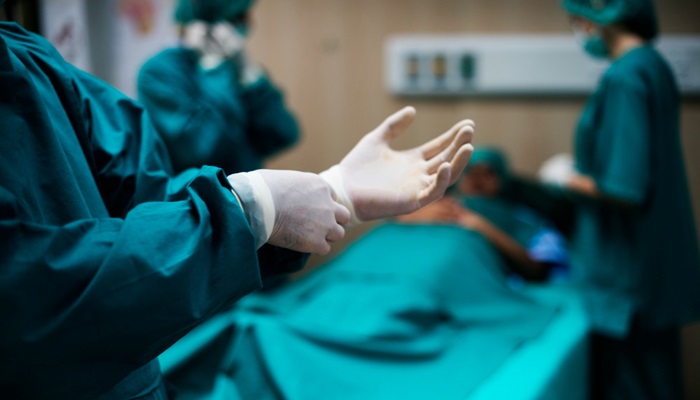Keyhole laparoscopic myomectomy is a recommended procedure for removing uterine fibroids. This method is chosen because, in addition to its relatively fast procedure time, the incisions made on the patient’s body are also minimal.
What is Keyhole Laparoscopic Myomectomy?
Uterine fibroids, or uterine myomas, are tumors that grow in a woman’s uterus. These growths are usually benign (non-cancerous) and do not develop into cancer. This condition is also common, with 1 in 5 women developing uterine fibroids during their reproductive years. Additionally, about half of all women will have fibroids by the age of 50.
Fibroids can be treated in several ways, including surgery. The surgical removal of uterine fibroids is known as a myomectomy. There are multiple myomectomy methods available, one of which is the keyhole laparoscopic method. The choice of method depends on the size, number, and location of the fibroids.
Keyhole laparoscopic myomectomy is a minimally invasive procedure used to remove uterine fibroids. The term “keyhole” refers to the extremely small incisions made by the doctor to insert laparoscopic instruments, usually less than 1 cm.
During the procedure, the surgeon makes small incisions in the patient’s abdomen and then inserts a laparoscope (a special instrument equipped with a light and camera) to perform the surgery through these tiny incisions. The surgeon views the procedure on a video monitor while operating.
When is Keyhole Laparoscopic Myomectomy Recommended?
So, when is this procedure recommended?
Doctors may suggest a keyhole laparoscopic myomectomy under the following conditions:
- The largest fibroid is less than 10 cm in size.
- The total number of fibroids is fewer than five.
- The estimated surgery duration is less than three hours.
It’s important to note that larger or multiple fibroids can sometimes still be removed using this method, depending on the patient’s condition. Additionally, this procedure can be performed in two to three stages. In some cases, hormone injections or specific tablets may be used to shrink the fibroids before surgery to facilitate the procedure.
Keyhole Laparoscopic Myomectomy Procedure
Before the Procedure
Before undergoing a keyhole laparoscopic myomectomy, patients must fast (avoid eating and drinking) for a few hours before surgery. Patients should follow their doctor’s specific recommendations regarding fasting duration.
If you are taking certain medications, consult your doctor about whether you need to adjust your medication regimen in the days leading up to surgery. Inform your doctor about any medications, vitamins, or supplements you are currently taking.
Depending on the type of procedure, you may receive one of the following types of anesthesia:
- General anesthesia: With general anesthesia, you will be completely asleep, and a tube will be placed in your throat. This is typically used for keyhole laparoscopic myomectomy and sometimes for abdominal myomectomy.
- Monitored anesthesia care (MAC): With this type of anesthesia, patients usually do not remember anything and feel as if they are asleep. No tube is inserted into the throat. This is often used for hysteroscopic myomectomy, as it is a less invasive procedure.
In some cases, other anesthesia options, such as spinal or local anesthesia, may be used. Consult your doctor about the type of anesthesia you will receive before undergoing surgery.
During the Procedure
During the keyhole laparoscopic myomectomy, the surgeon makes a small incision in or near the patient’s navel. The surgeon then inserts a laparoscope into the abdomen. Next, surgical instruments are inserted through additional small incisions in the abdominal wall to remove the fibroids.
After the Procedure
Upon discharge from the hospital, the doctor will prescribe oral pain medication, provide self-care instructions, and discuss dietary and activity restrictions. Patients may experience light vaginal spotting or discharge for several days to six weeks, depending on the type of procedure performed.
Expected Outcomes
Women who undergo keyhole laparoscopic myomectomy, with or without robotic assistance, generally have good pregnancy outcomes within about a year after surgery. After a myomectomy, it is recommended to wait 3-6 months before attempting pregnancy to allow the uterus to heal.
In addition to improving fertility, myomectomy can also relieve bothersome symptoms of uterine fibroids, such as:
- Heavy menstrual bleeding
- Pain
- Pelvic pressure
One of the primary benefits of keyhole laparoscopic myomectomy is preserving fertility, allowing patients to conceive after fibroid removal. In some cases, this procedure may even improve fertility if fibroids were previously preventing pregnancy.
However, it’s essential to be aware that both abdominal and laparoscopic myomectomy can increase the risk of uterine rupture during pregnancy and childbirth. Women who have undergone these procedures often require a Cesarean section (C-section) for delivery.
If you have any questions regarding keyhole laparoscopic myomectomy or other women’s health concerns, don’t hesitate to visit Mandaya Royal Hospital Puri and consult with experienced medical professionals.
You can also use the Chat feature via WhatsApp, Book Appointment, or download the Care Dokter app on Google Play and the App Store for easier visits, queue number tracking, and complete information.



